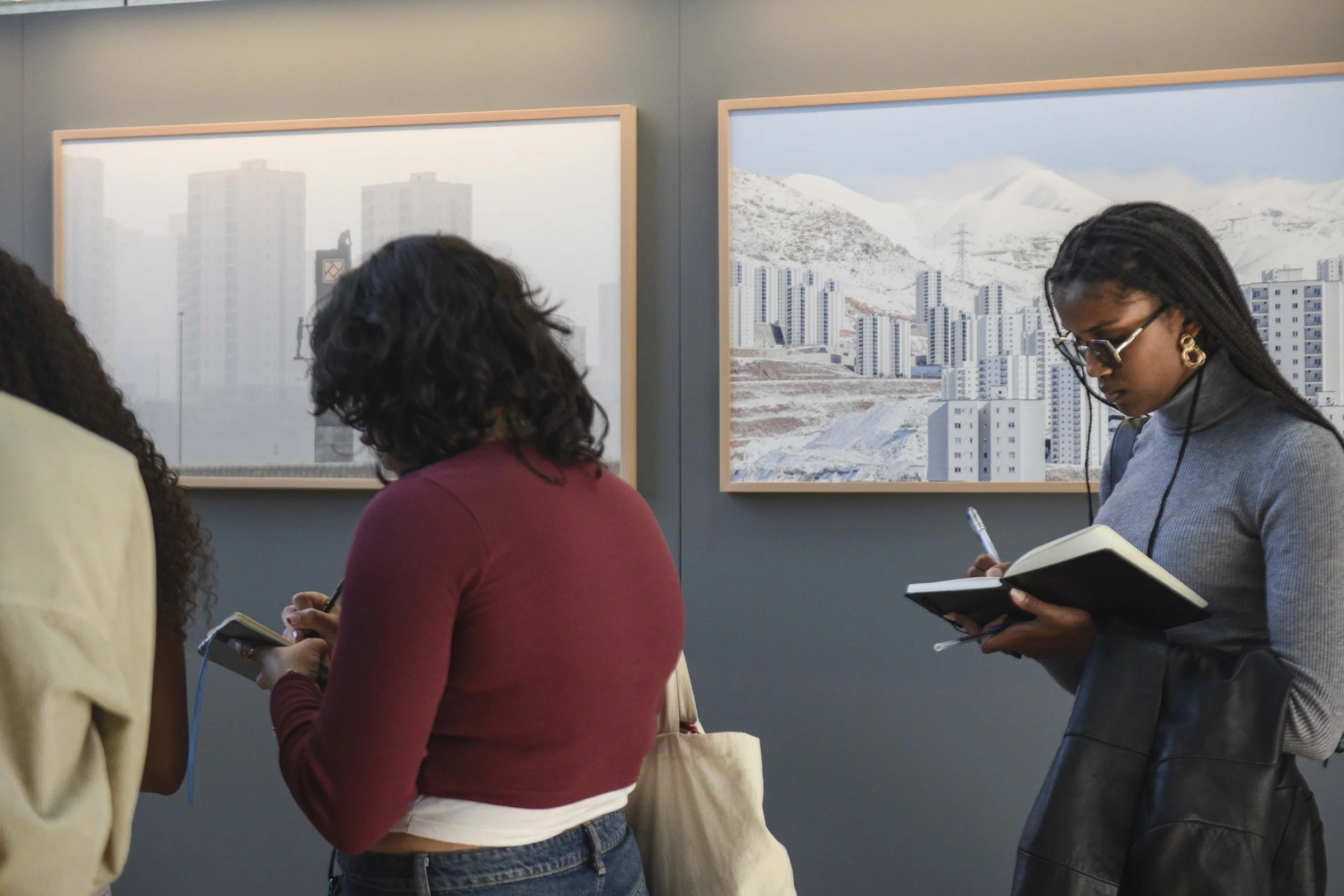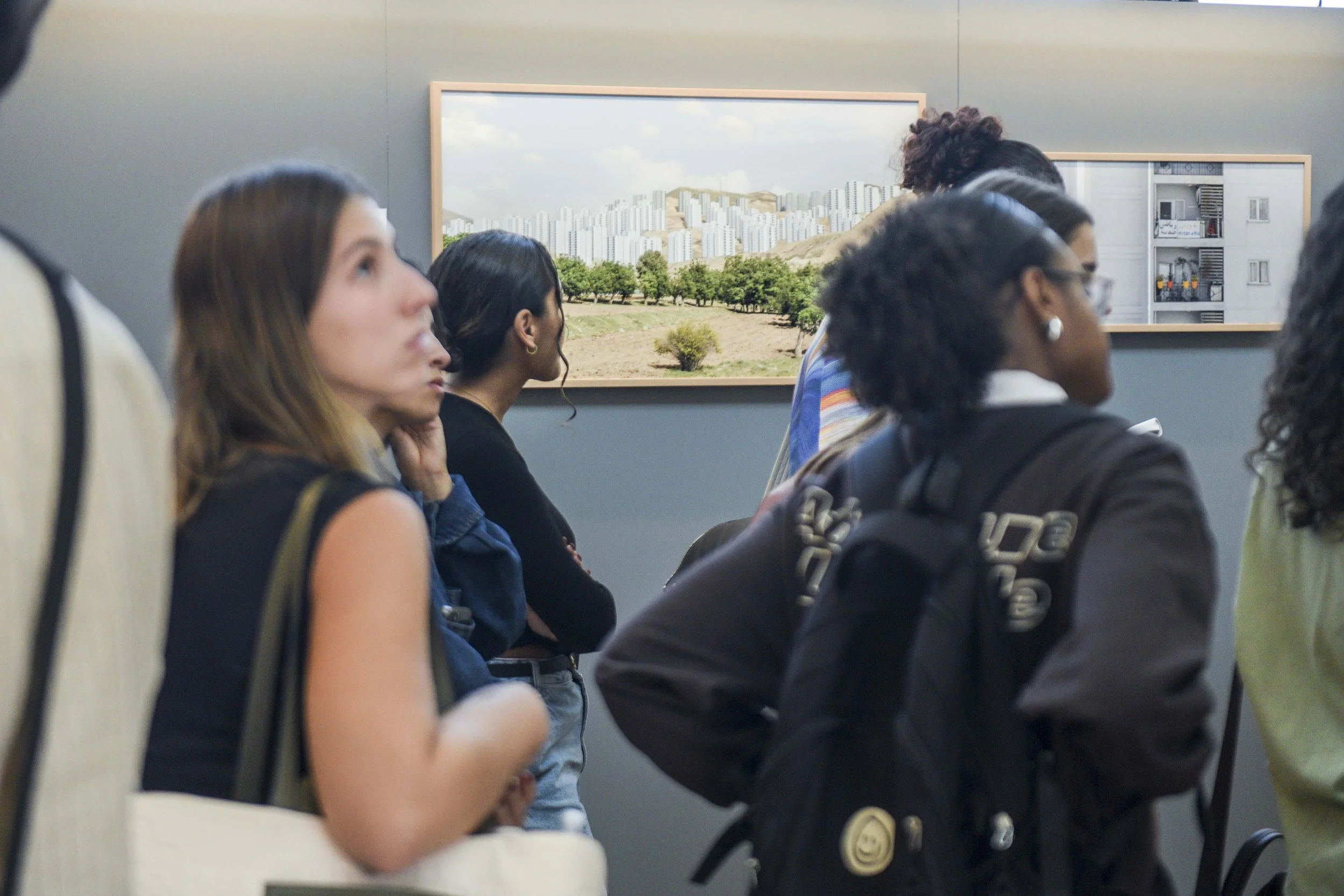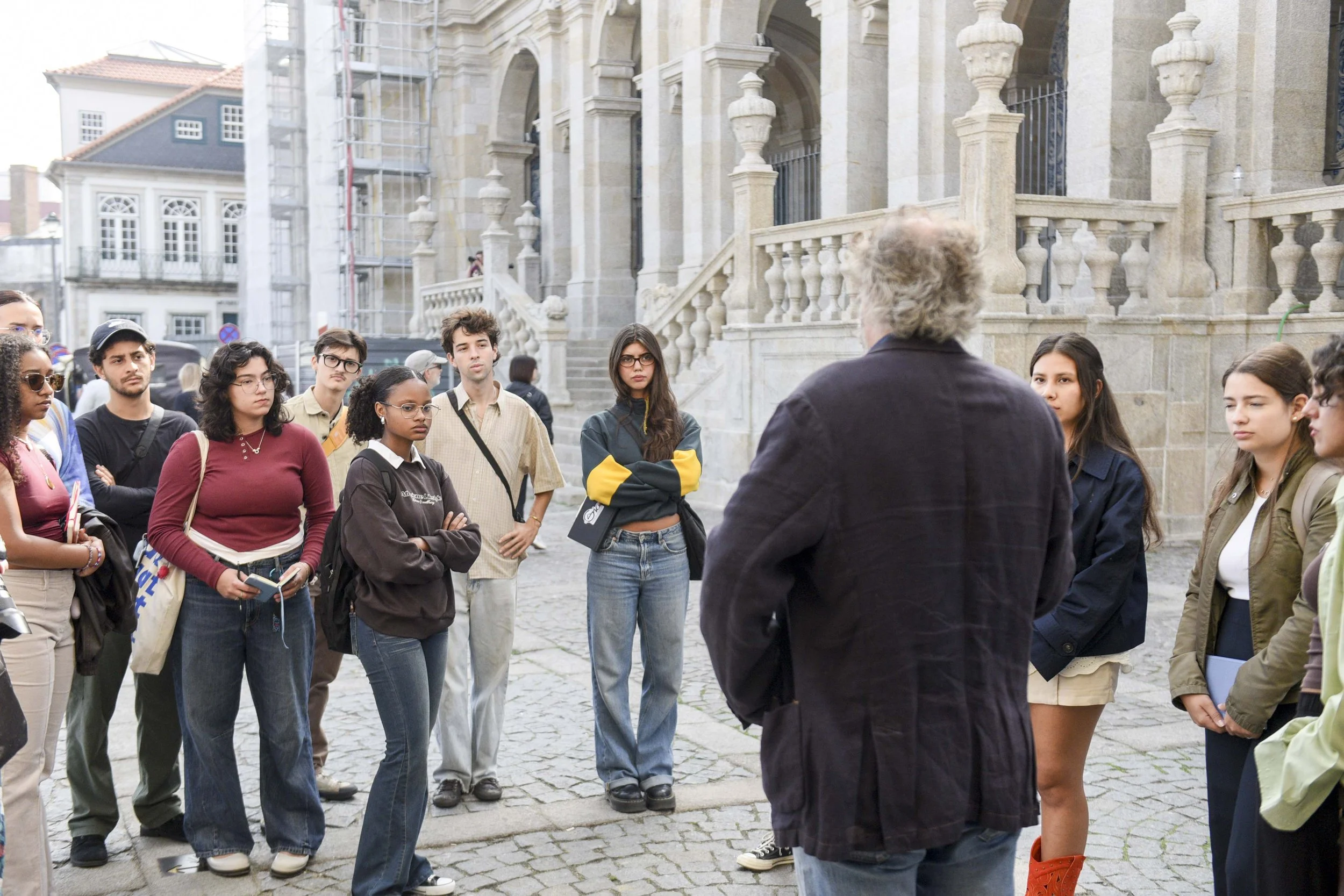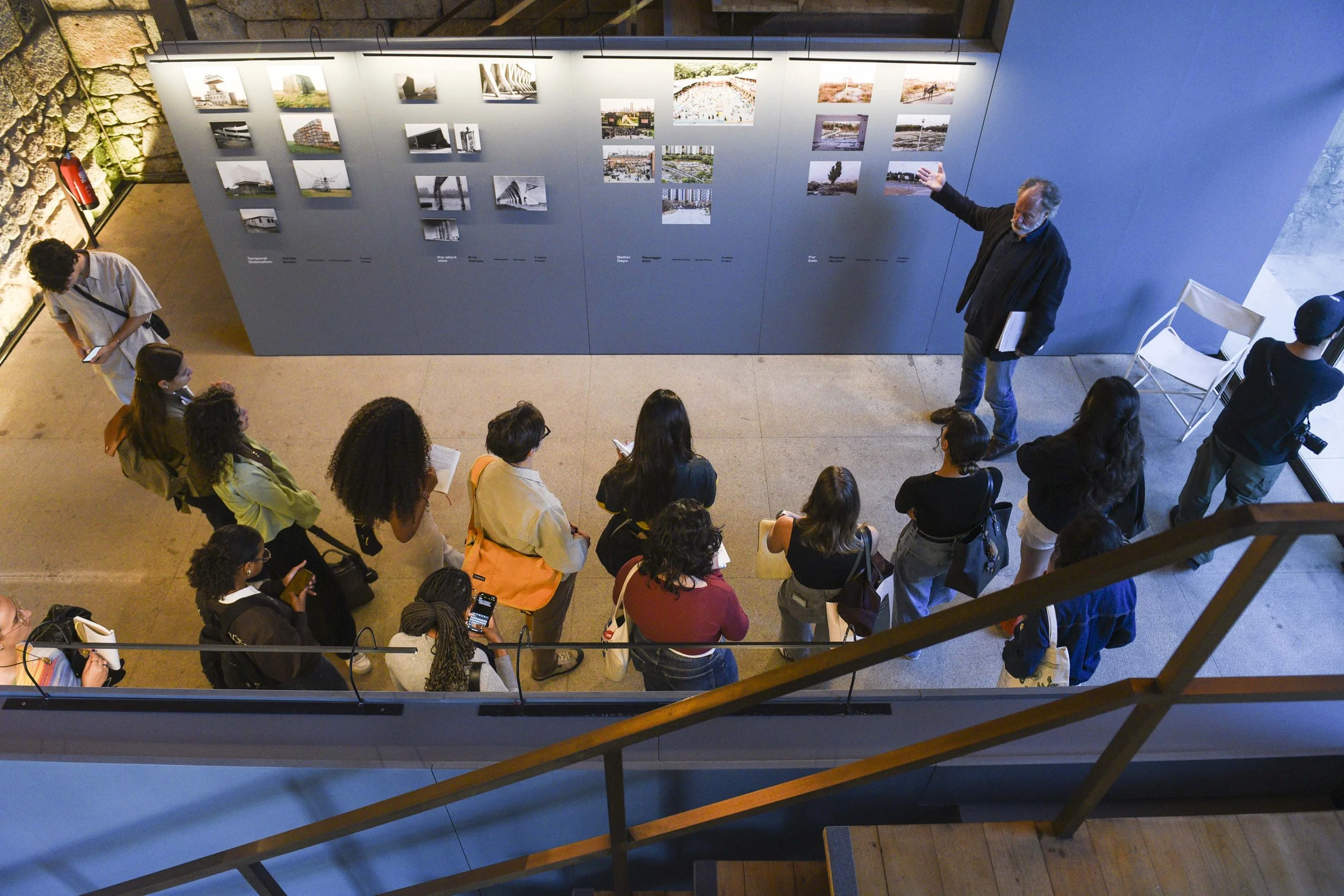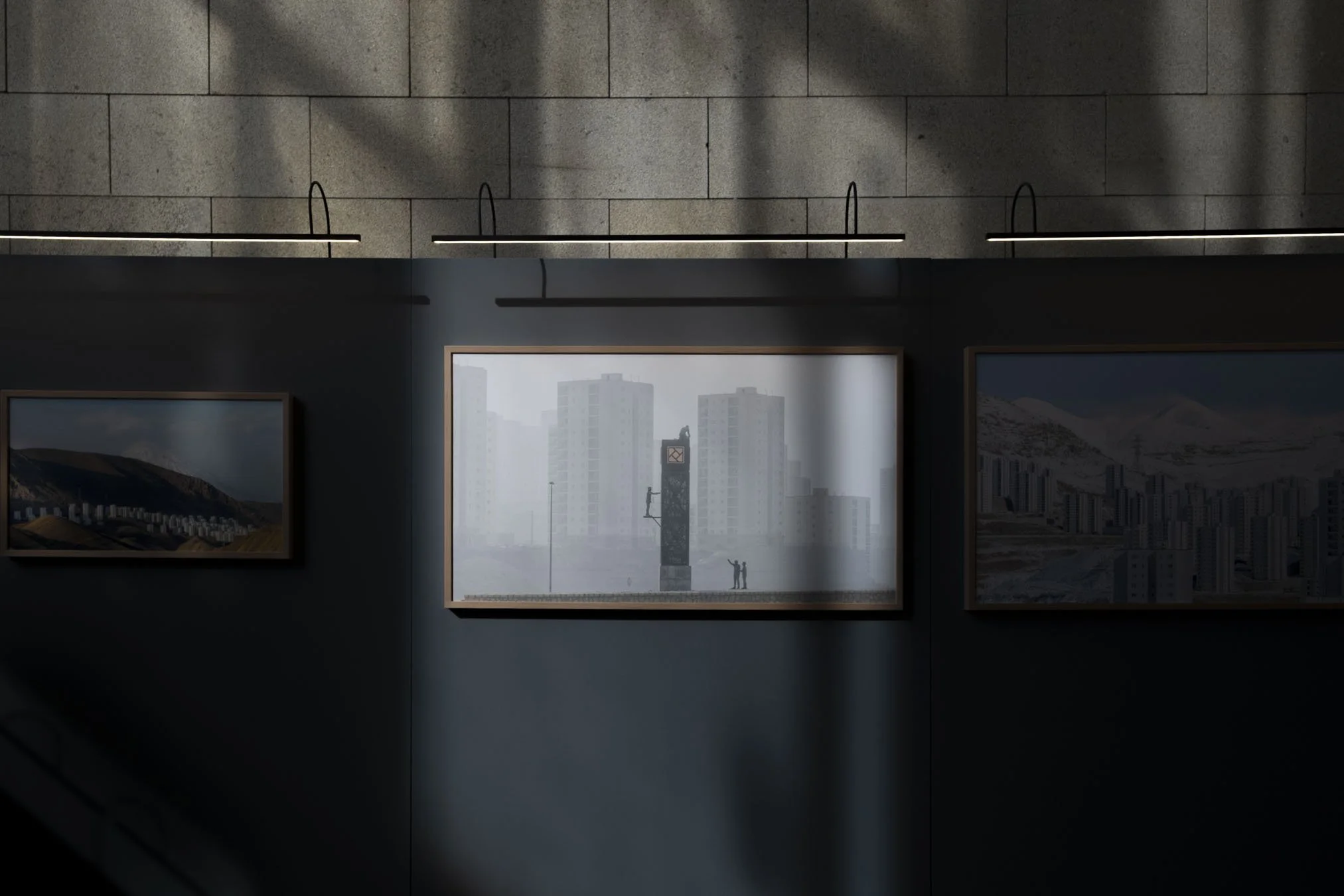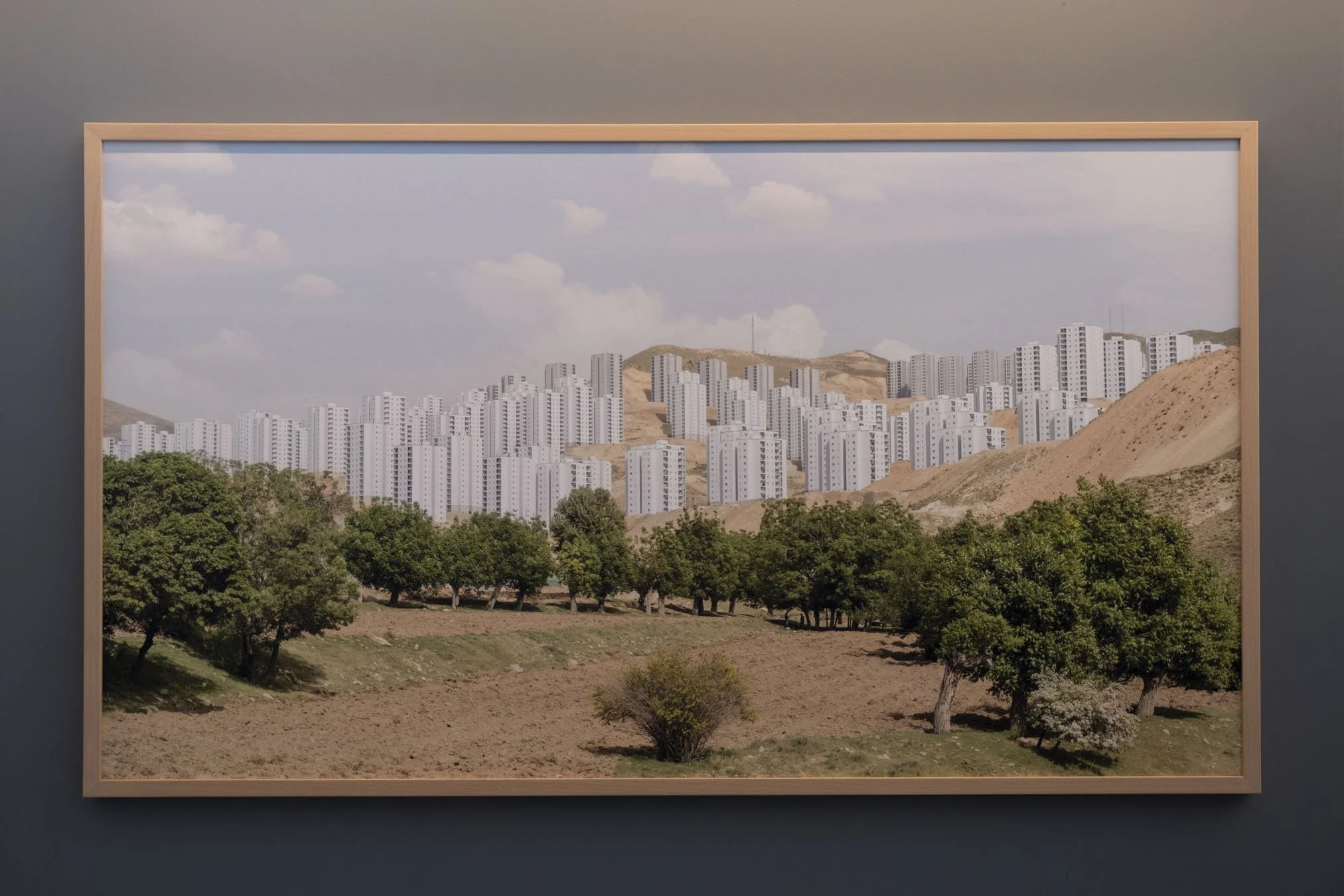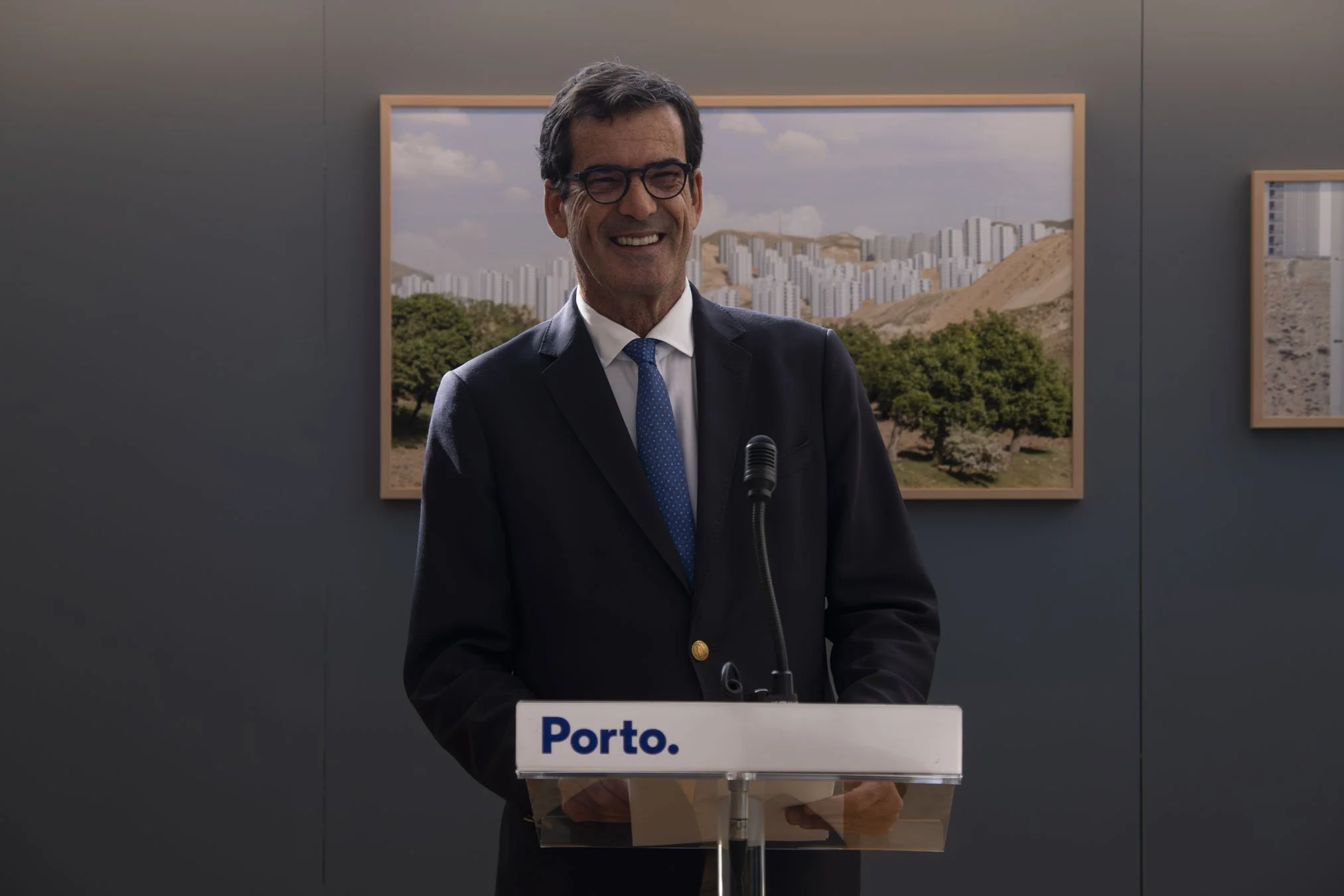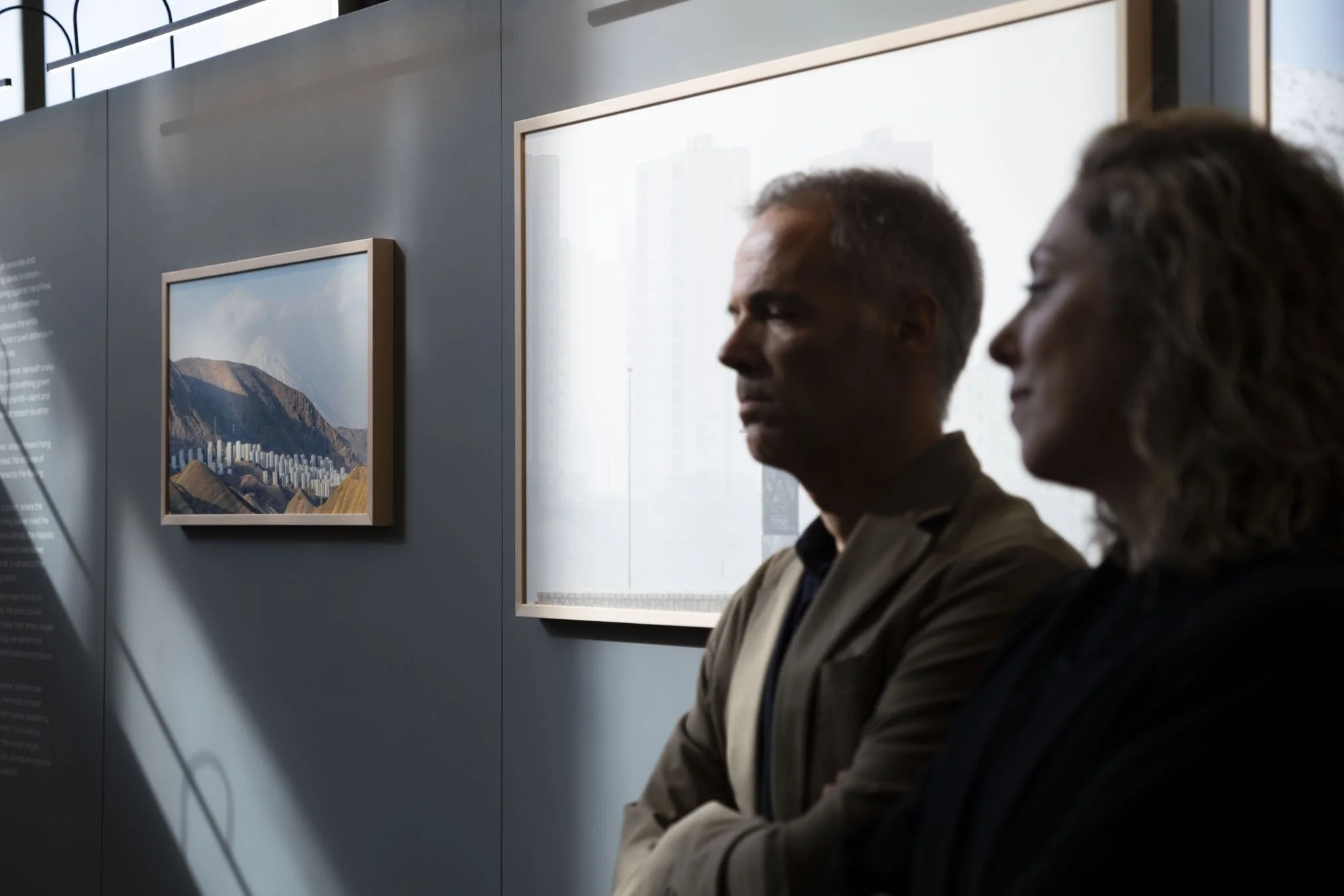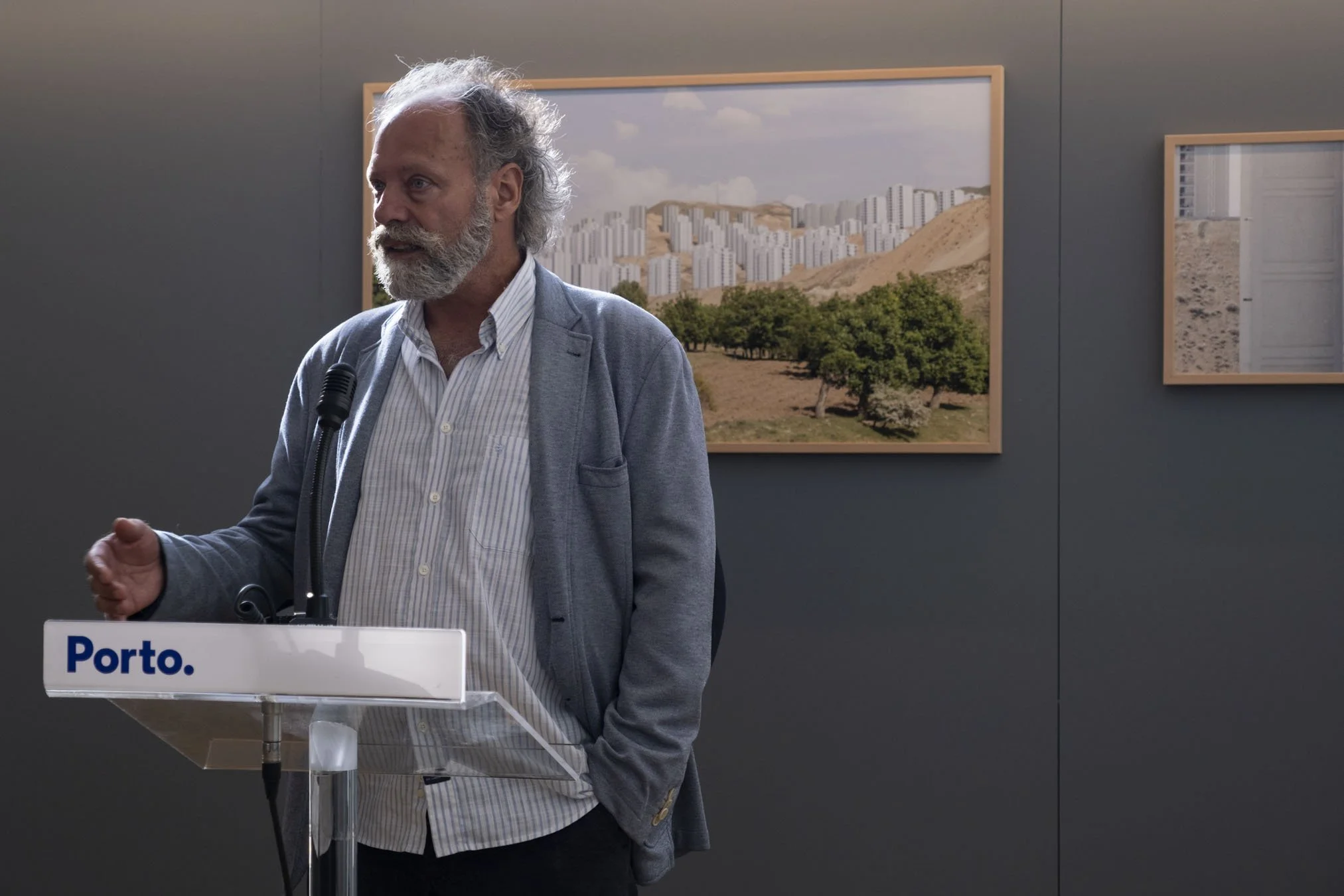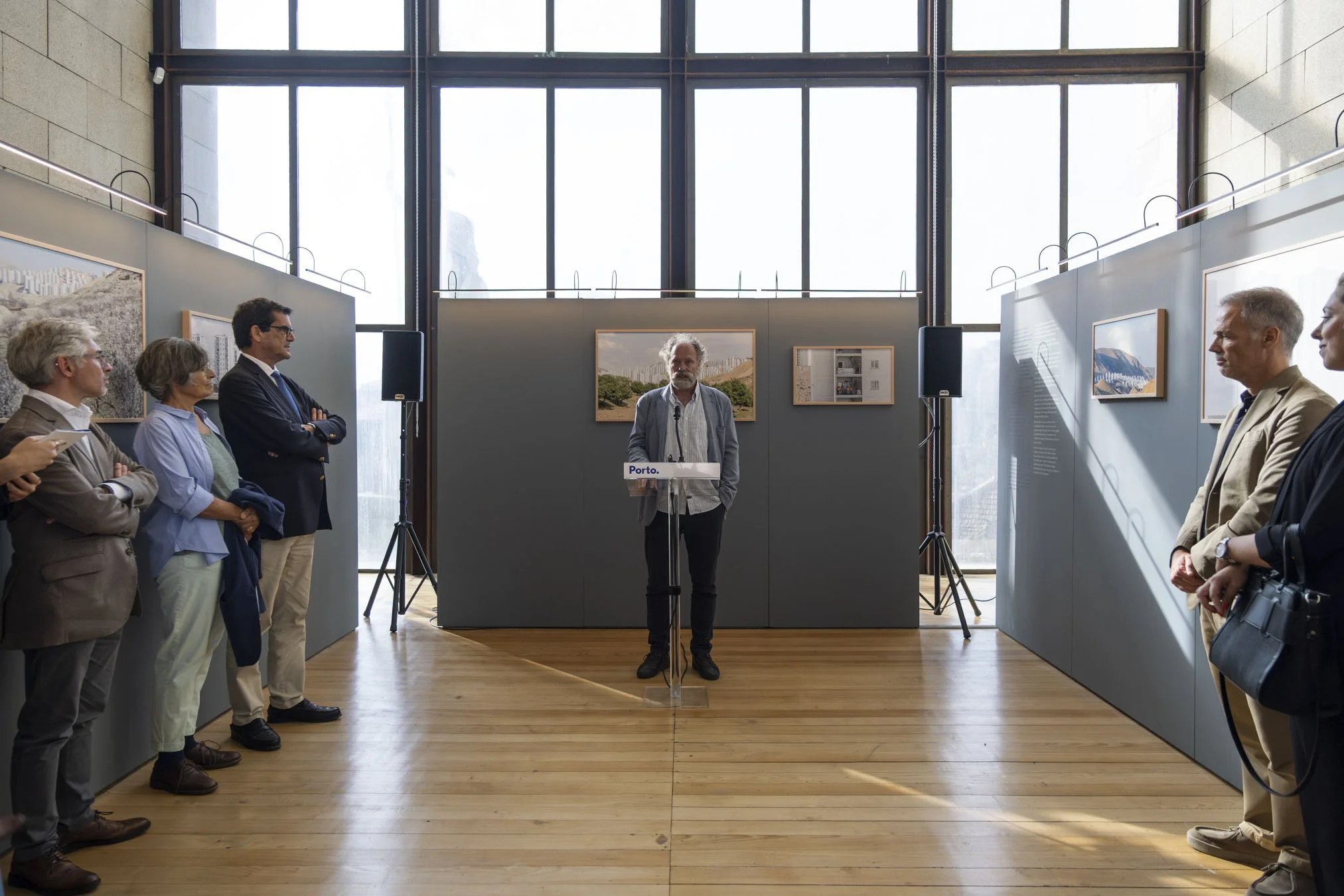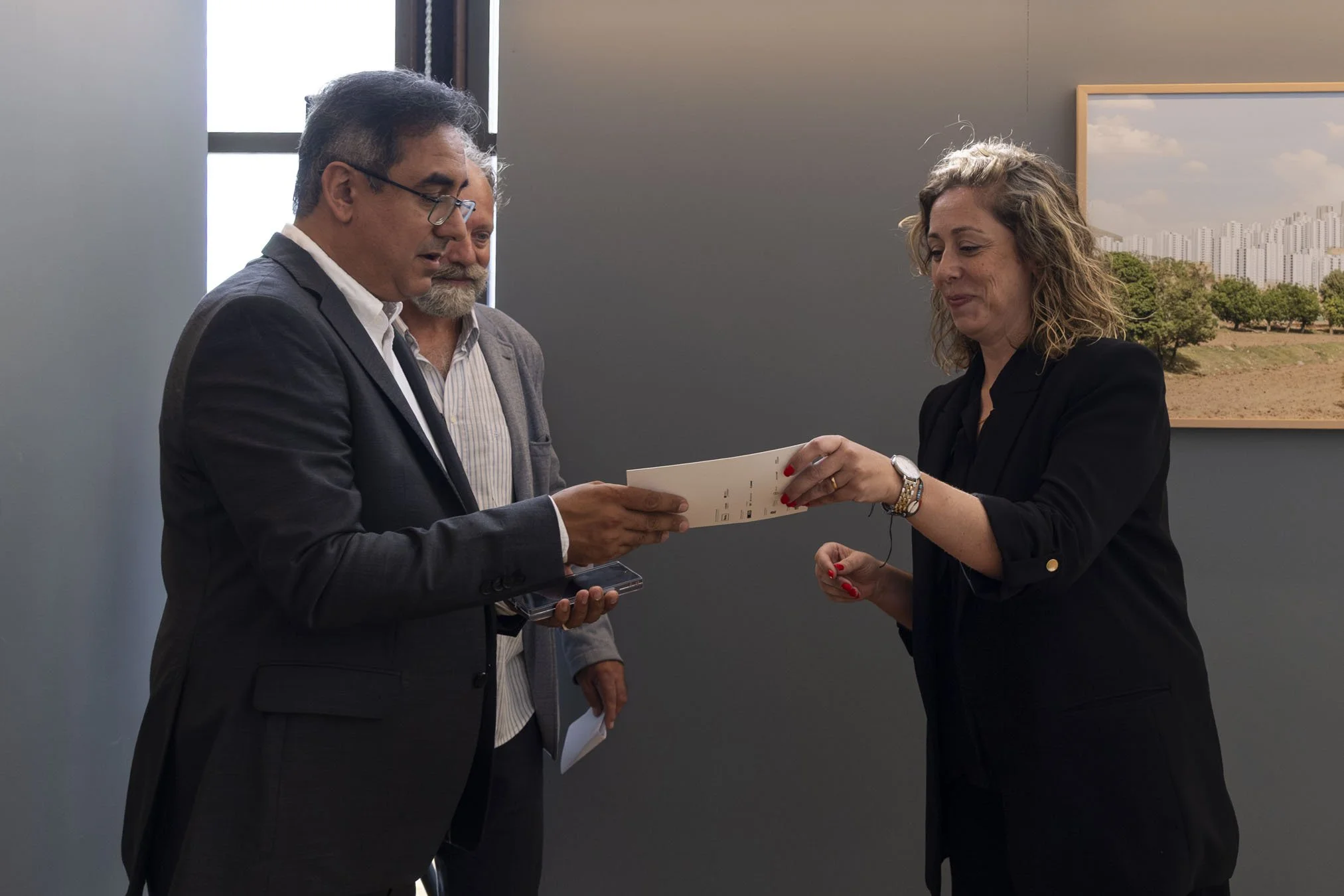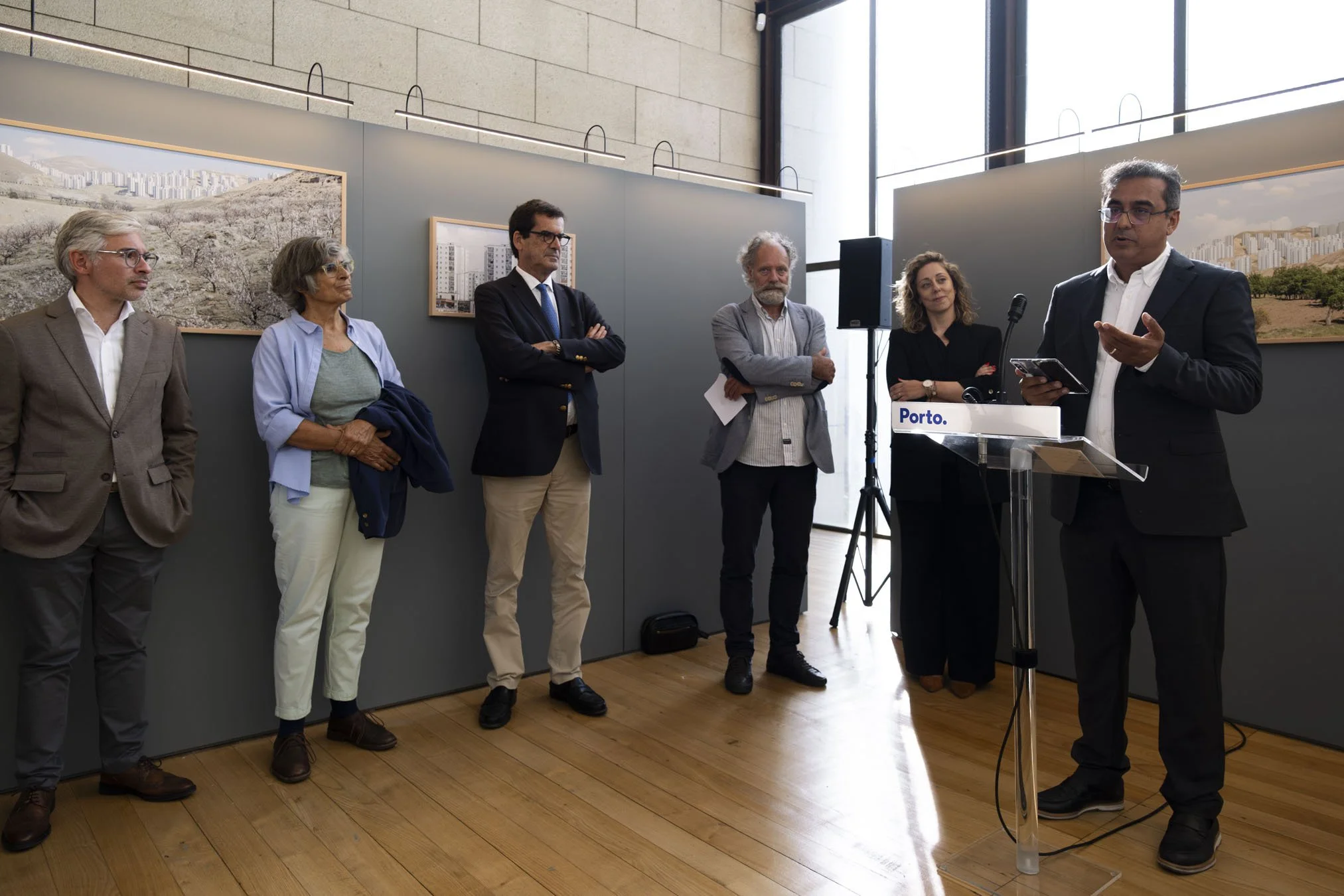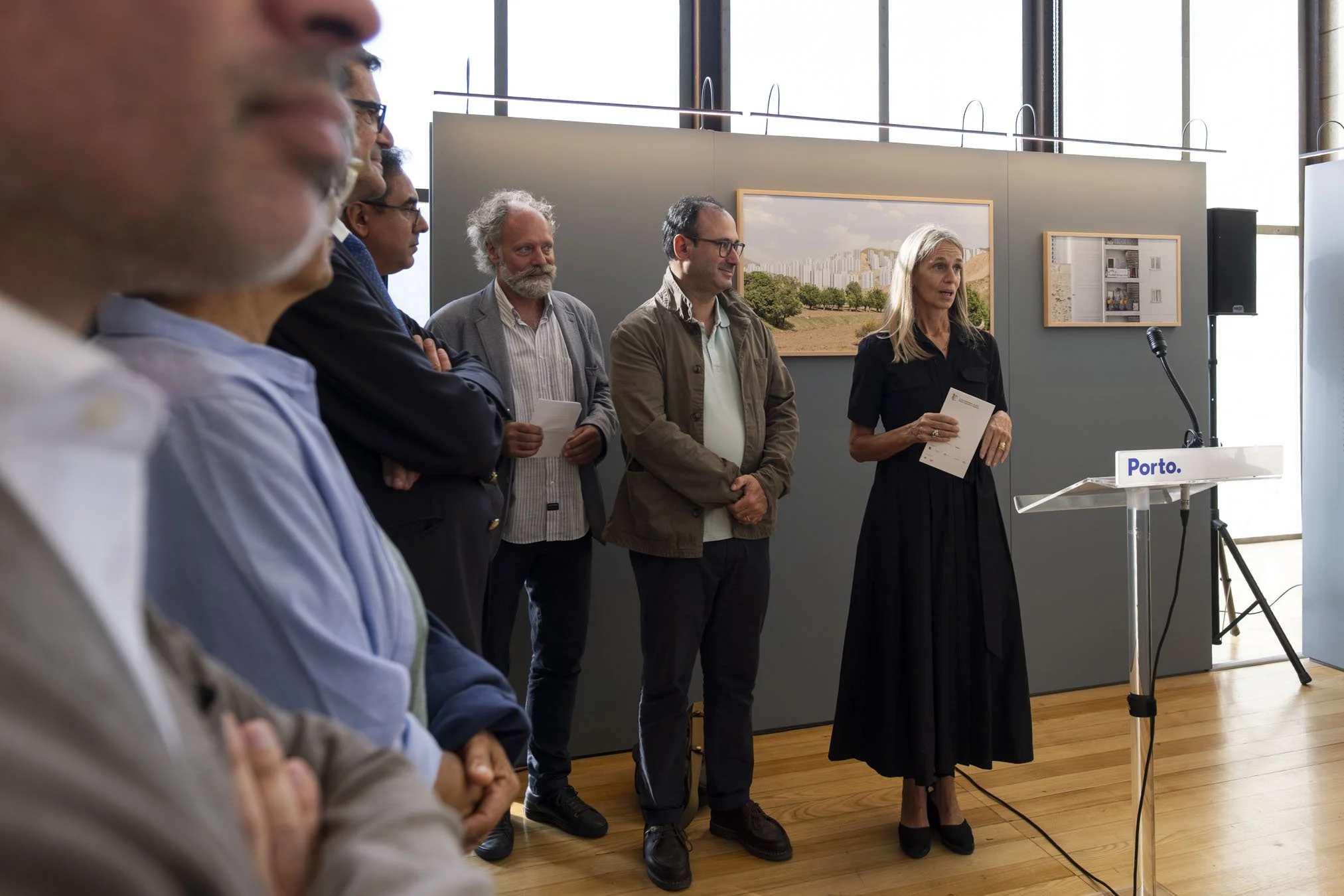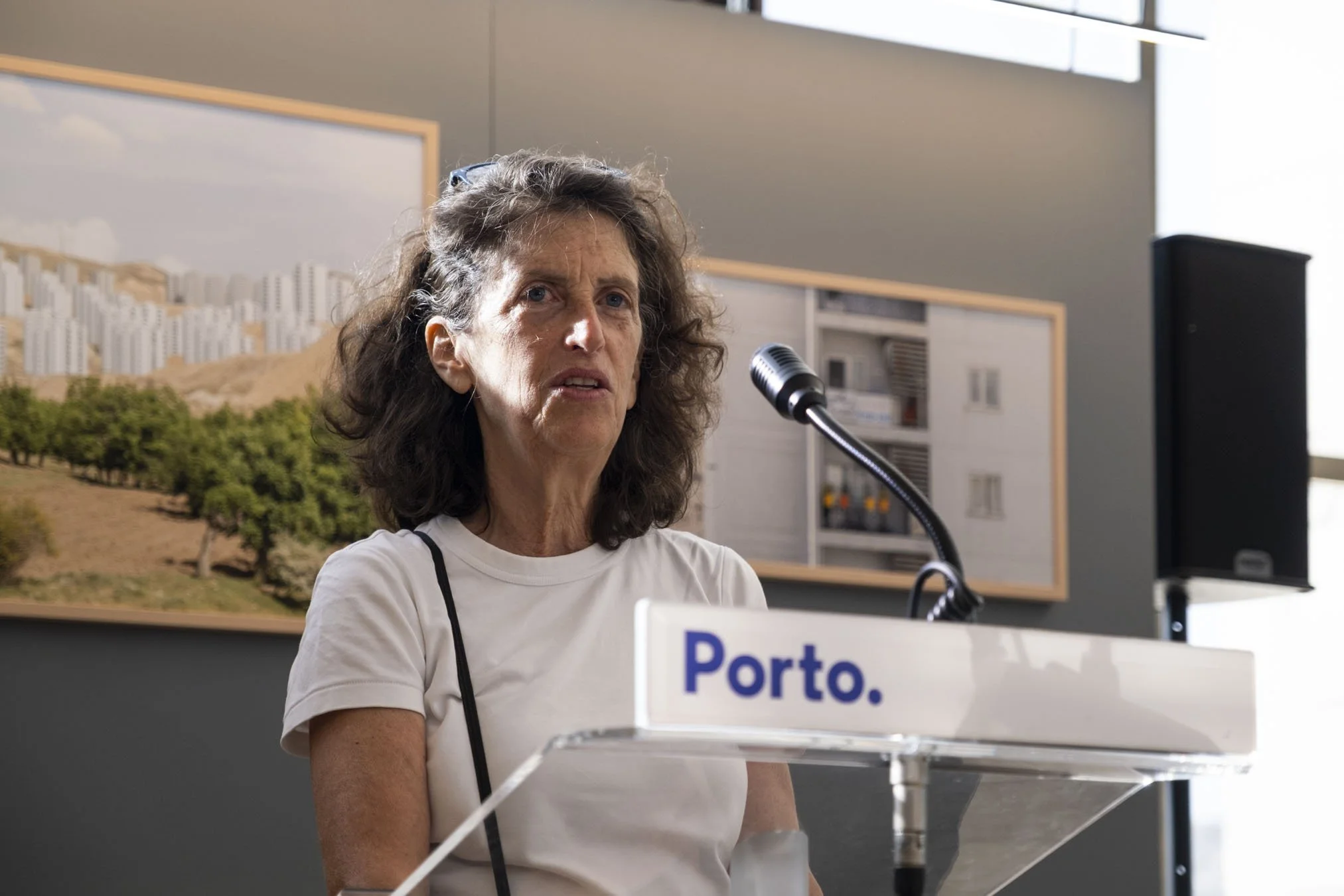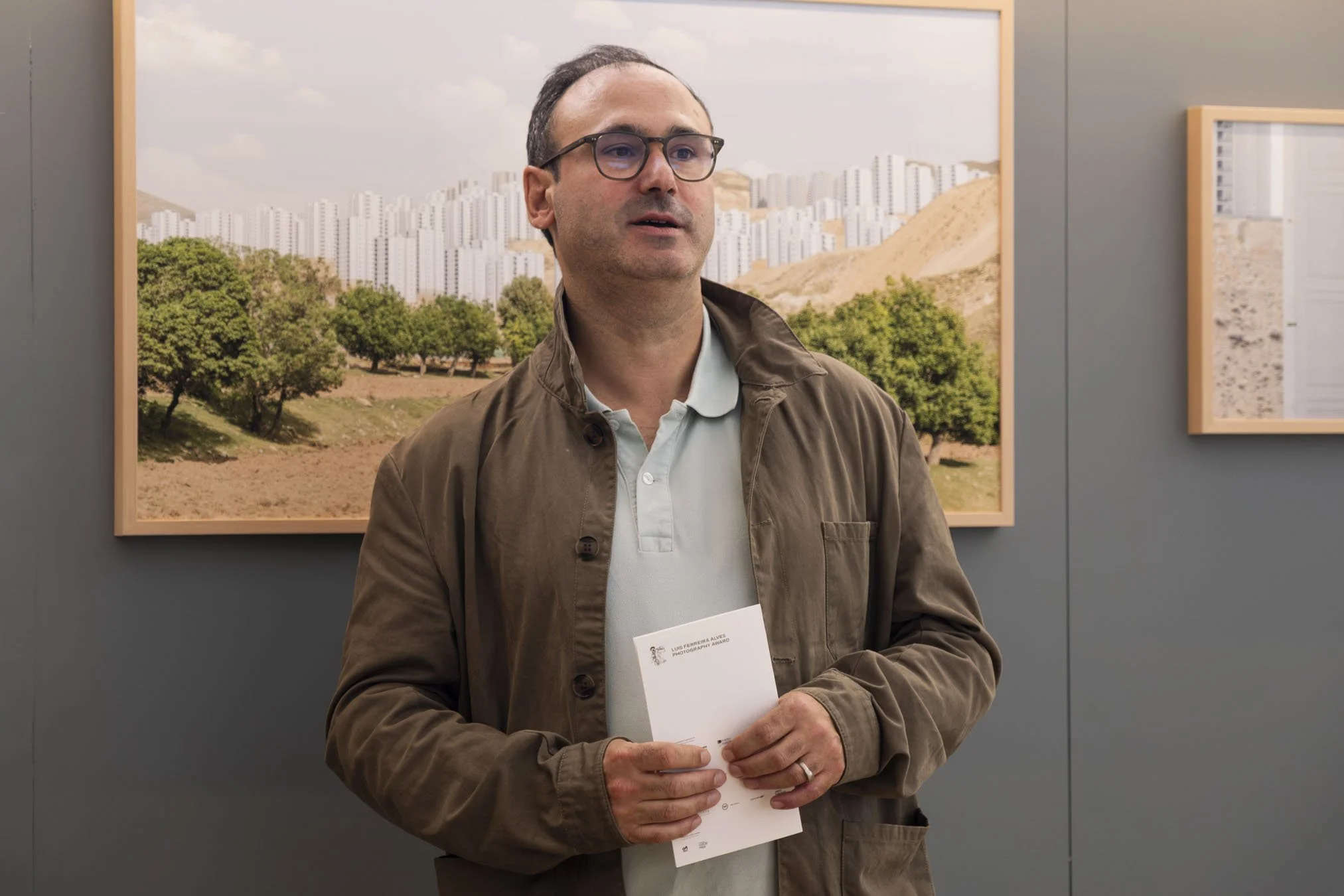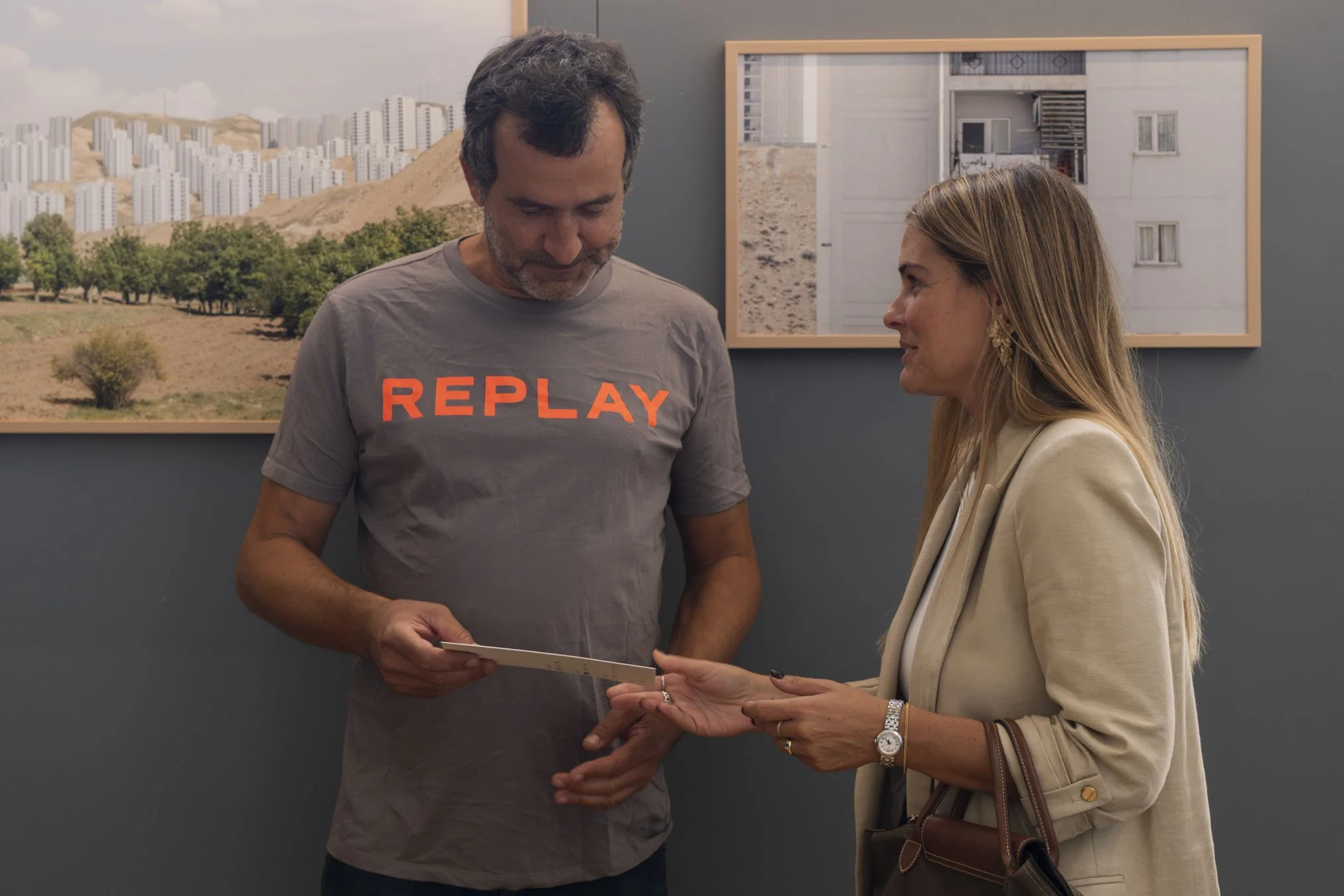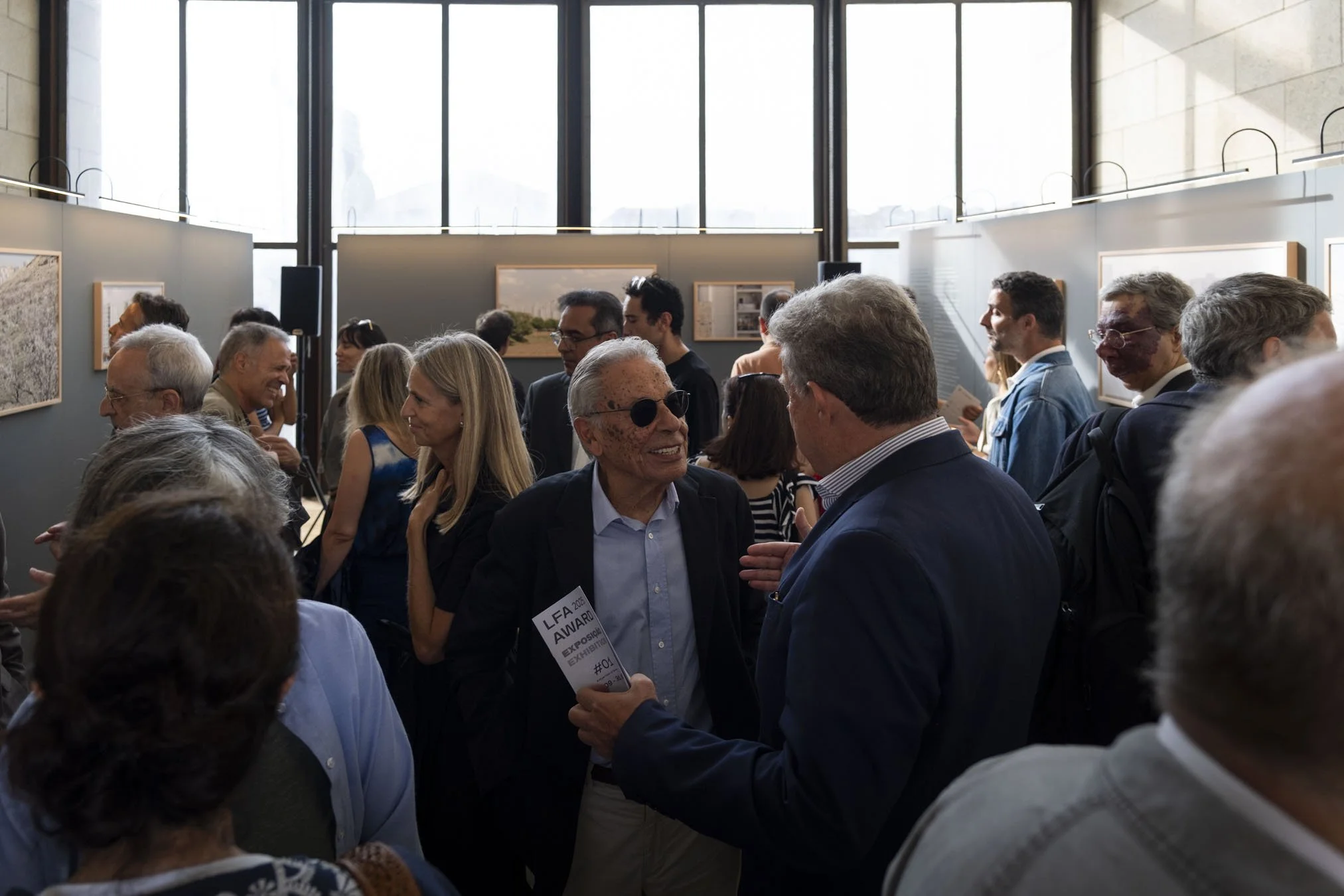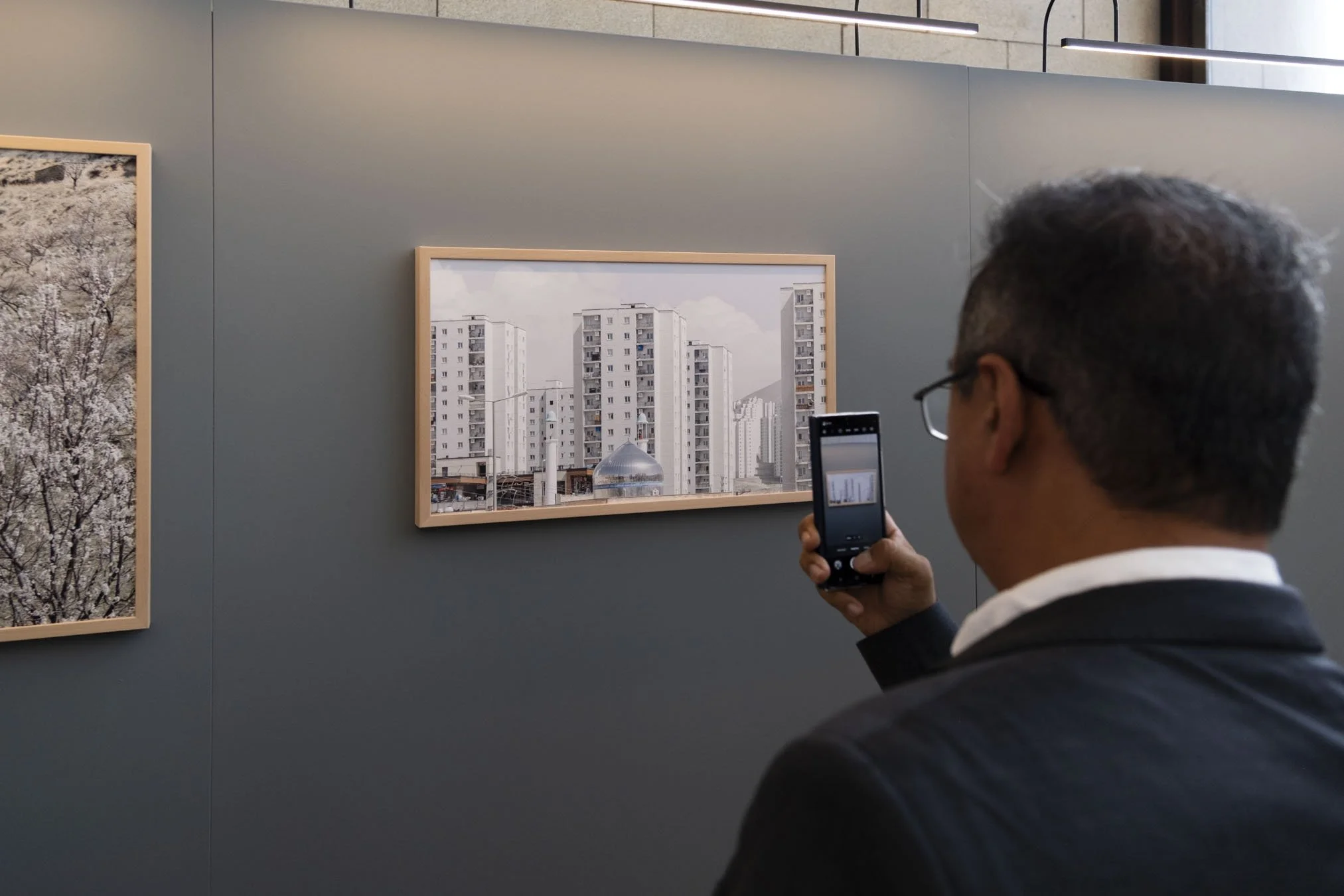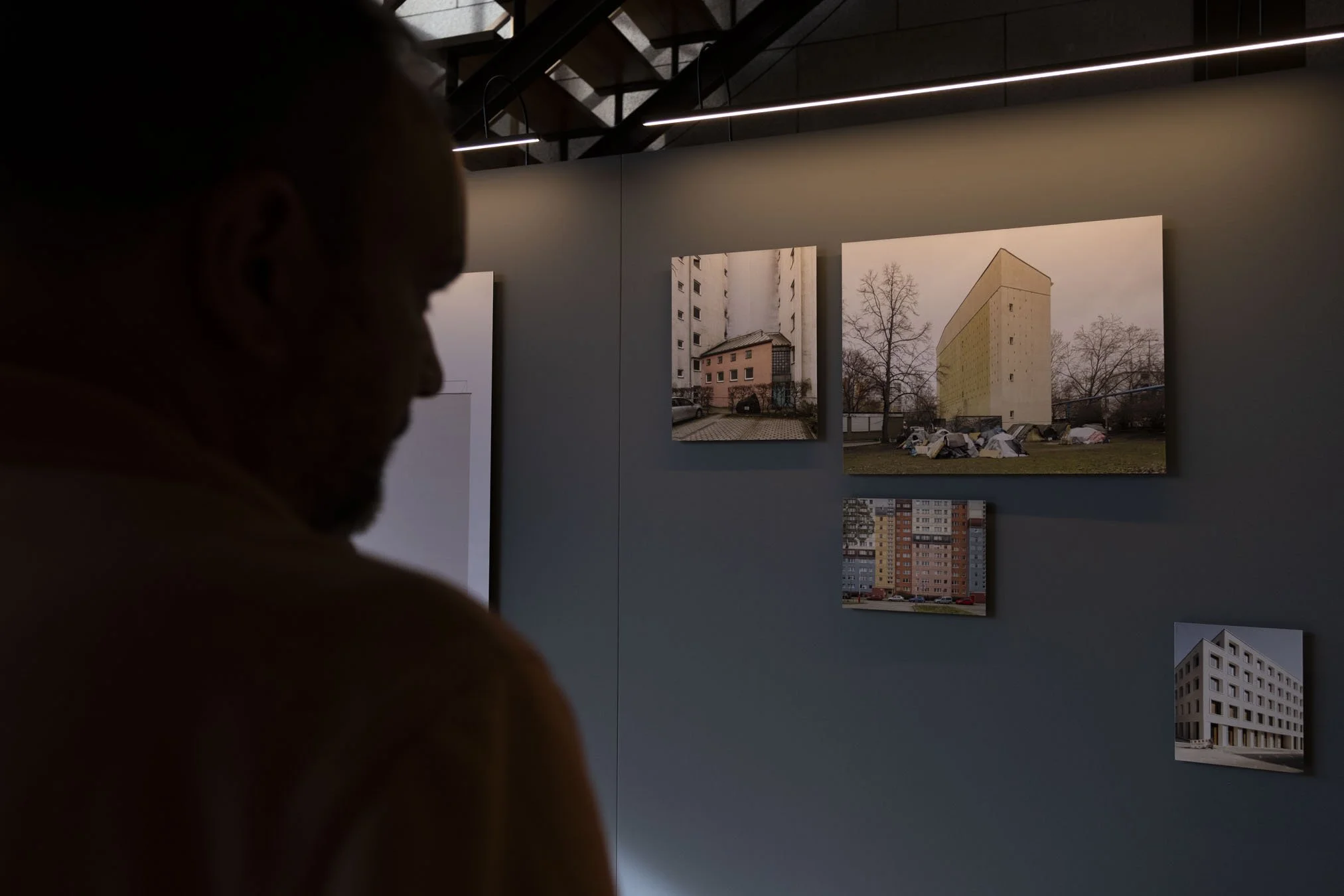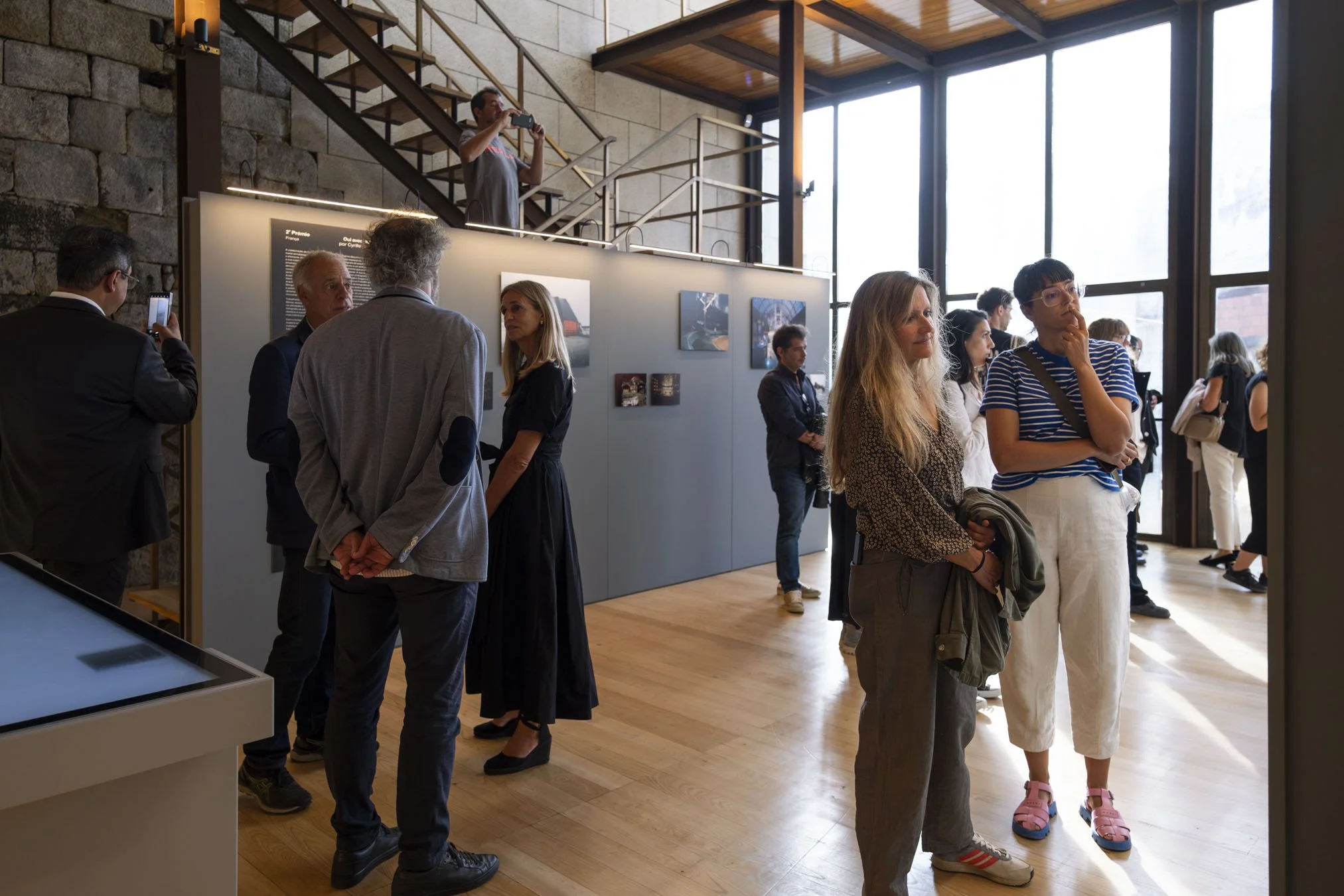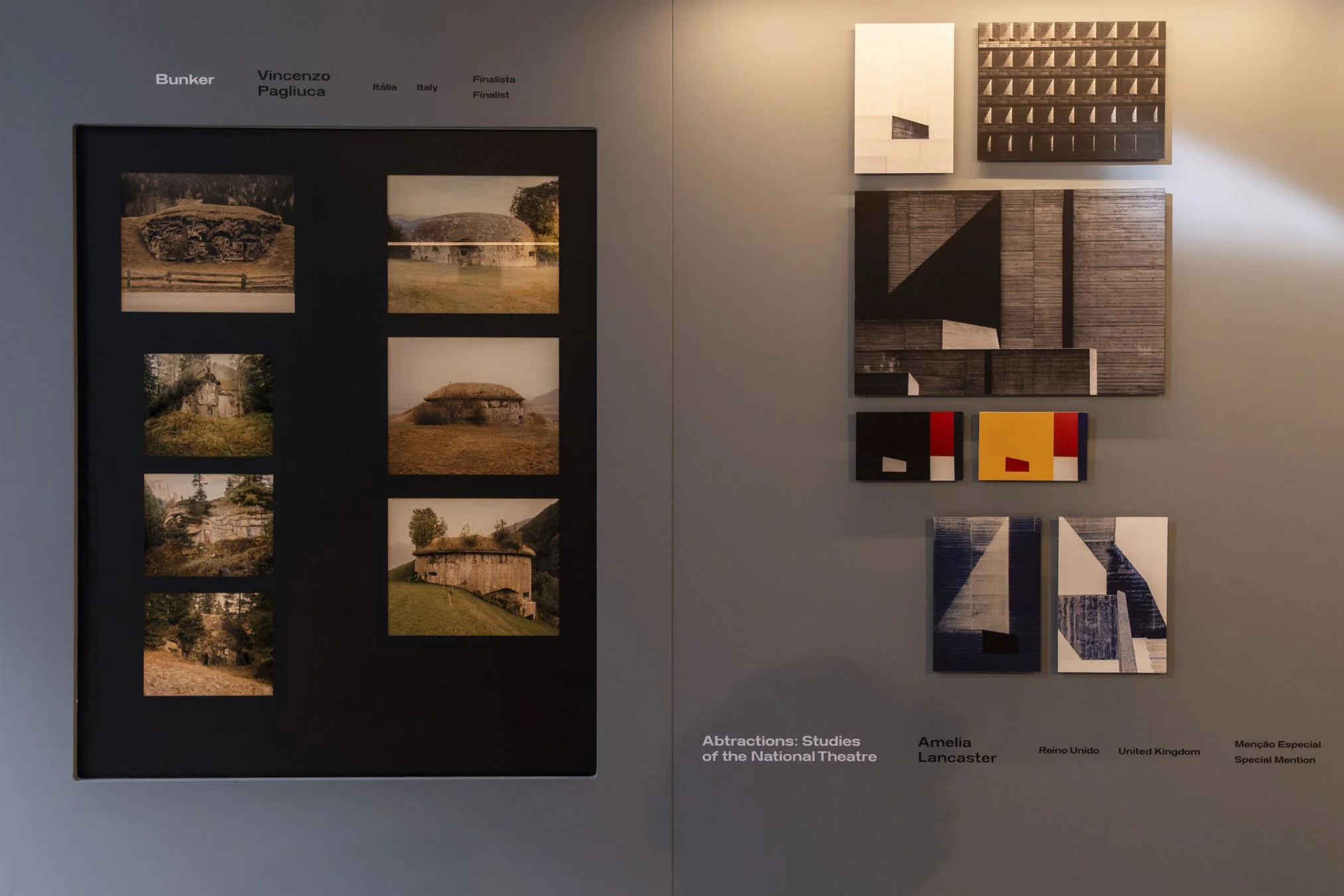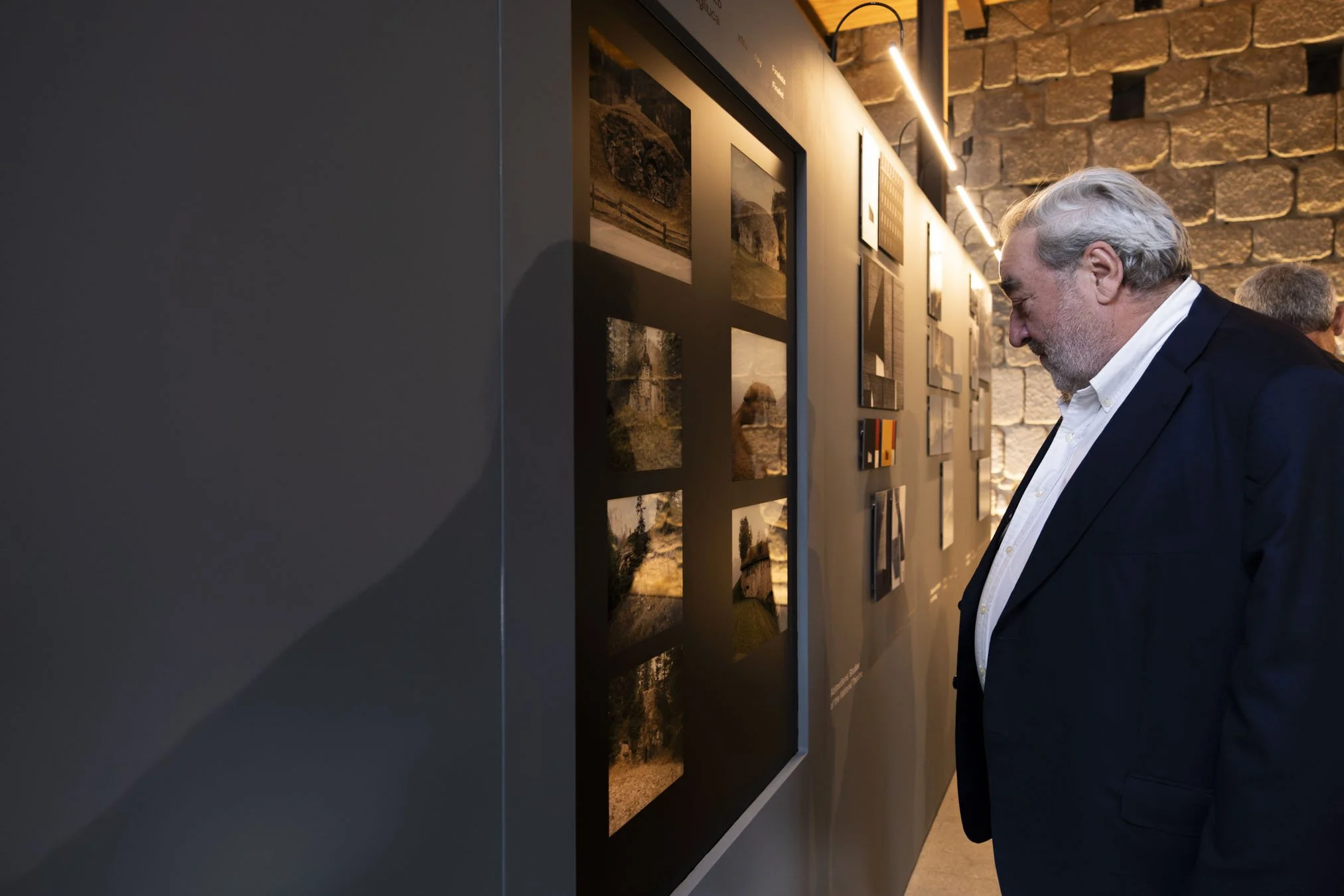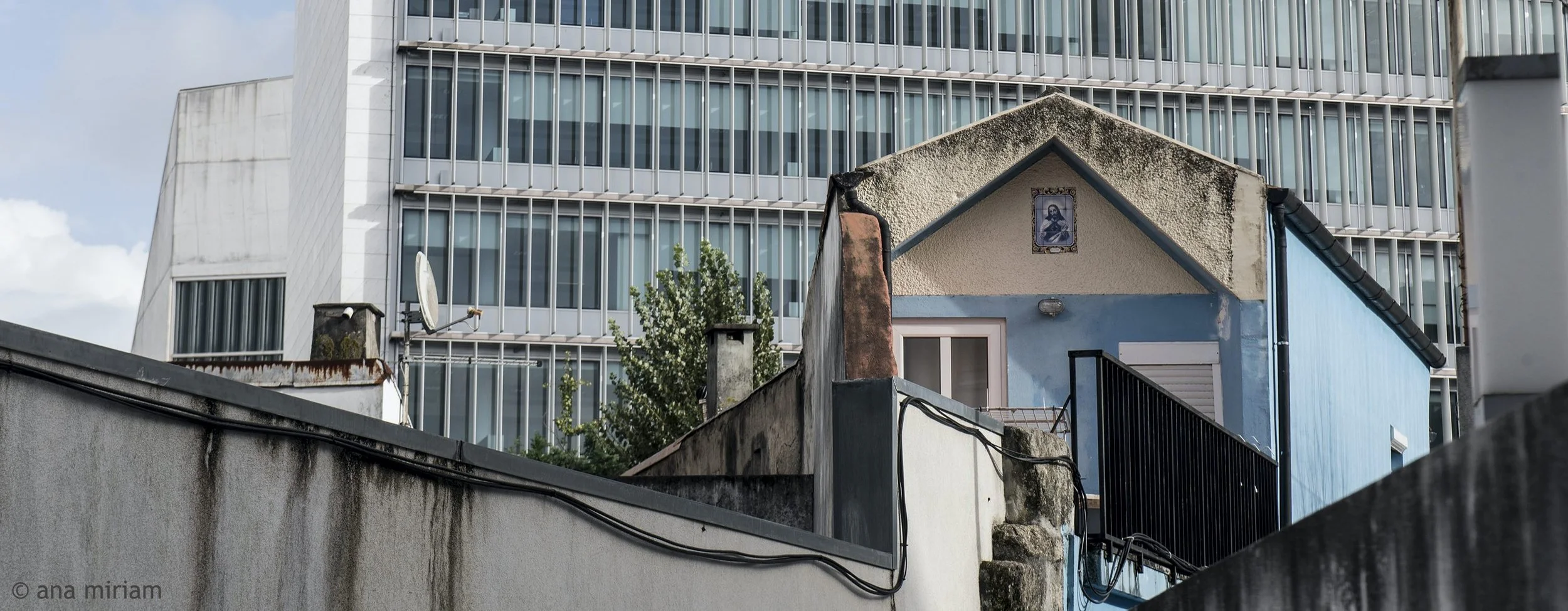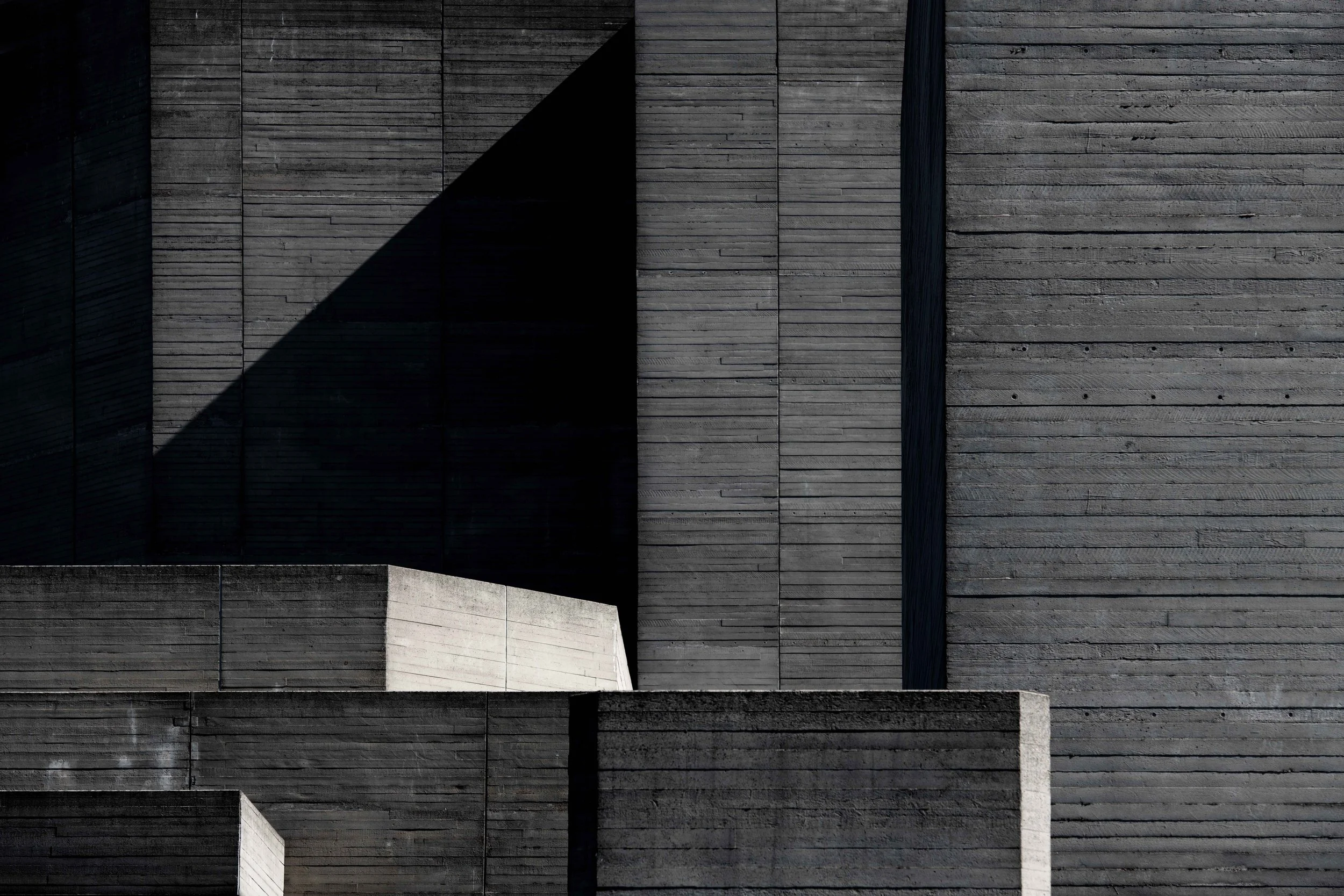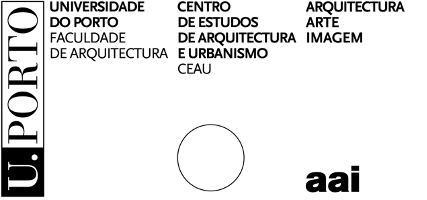Spectres: Guided tour by Maria Neto, Pedro Leão Neto and Jorge Marum
18 October – 5 p.m. · [16+]
EN / PT
As part of the 7th edition of the Lisbon Triennale, dedicated to the theme How Heavy is a City?, a guided tour of the exhibition Spectres was held at MUDE, led by architects and researchers Maria Neto, Pedro Leão Neto and Jorge Marum, members of the Architecture, Art and Image group (AAI/CEAU/FAUP).
The tour offered a reflective journey through the works that comprise the exhibition, addressing the ways in which image, language, and technology influence the perception, construction, and criticism of contemporary cities.
The focal point of the tour was the project The Weight of Words, submitted to the Millennium bcp Lisbon Triennale Universities Competition and awarded the Universities Prize in the Research category. This work stems from research on the Dadaab refugee camp in Kenya — a city that exists de facto, but not de jure — and questions the weight of words and legal boundaries in defining inhabited space.
"Every word — refugee, emergency, reception — shapes space, creates boundaries, defines bodies. Words carry weight because they shape the world," explained Maria Neto, emphasising how language becomes an instrument of power and exclusion, but also of resistance and creation."
In dialogue with the exhibition Spectres, The Weight of Words expands the reflection on the visible and the invisible — on the imaging technologies that reveal the planet and the words that describe it —, proposing a critical reading of the relationships between architecture, politics and language.
Throughout the visit, the authors invited the public to question the boundaries between the urban and the planetary, between the human and the technical, revisiting the central questions raised by the Triennial:
How heavy is a city?
How heavy are its images, its words, its absences?
Final reflections
At the closing, Maria Neto returned to the opening question:
"I want to end by returning to the initial question: How Heavy is a City?
What this exhibition teaches us is that the weight of a city is not only in its buildings, its infrastructure or its waste.
It is also in its images, its words, its absences.
We live surrounded by spectres — by technologies that see for us, by systems that organise us, by memories that insist on returning. But the role of architecture, art and thought is precisely this: to make these spectres visible, to give them form and, in doing so, to free us a little from their weight.”
In addition, Pedro Leão Neto emphasised the urgency of rethinking the contemporary relationship with the image:
"In an age marked by the unbridled production of digital images — ephemeral, decontextualised, impersonal, automatic and, at times, false — visual literacy, today perhaps more than ever, occupies a central place in our societies. Being able to think critically about images, and not just see them as a means of recording, but as a form of interpretation, criticism and communication, is essential. The image can be a device capable of (re)articulating social, ethical and aesthetic dimensions, and serving as a catalyst for debate about reality and multiple contemporary realities, helping to generate new dynamics of thought and awareness, bringing different audiences closer to these urgent issues of the present."
Author profiles
Maria Neto is an architect, university professor, and researcher with a PhD in Architecture on refugee camps in protracted situations, awarded by UAH+ICHaB-ETSAM (2022). With international experience in humanitarian action, she has collaborated with UNHCR and the British Red Cross in supporting refugees in Kenya and the UK. A recipient of the Fernando Távora Prize, she has been an invited speaker at the 17ª Venice Architecture Biennale, the 6th anniversary of Casa da Arquitectura, and was selected for the Lisbon Triennale Millennium bcp Universities Award, 2022. She is currently coordinating housing projects for the reception and integration of refugees and migrants in Fundão, one of which - Landscapes of Care and Domesticity - was selected in the Promove competition by the La Caixa Foundation/FCT.
Pedro Leão Neto is currently a Professor and Researcher at FAUP, where he leads the courses Photography and Communication in Architectural Design (FCPA I & II) and Photography of Architecture, City, and Territory (FACT). He also serves as the coordinator of the research group Architecture, Art and Image (AAI). He oversees the scopio publications, acting as Editor-in-Chief of the scientific journals Sophia Journal of Architecture, Art and Image. He is involved in several research projects funded through competitive grants both as a researcher and a Principal Investigator (PI). Within this field, he has published around 40 books, is the author and co-author of over 100 scientific articles.
Jorge Marum is an architect and photographer, currently Assistant Professor at the University of Beira Interior, where he teaches and coordinates courses in Architectural Design at both Master’s and Doctoral levels. His pedagogical practice is rooted in design studio teaching, bridging research and professional work through an action-research methodology. He actively engages students in real-life design processes within several competitively funded R&D projects focused on territorial and social impact. His recent work addresses housing programs, construction systems, and social inclusion. He has received awards in public competitions, collaborating in private practice with Maria Neto and Rogério Galante.












